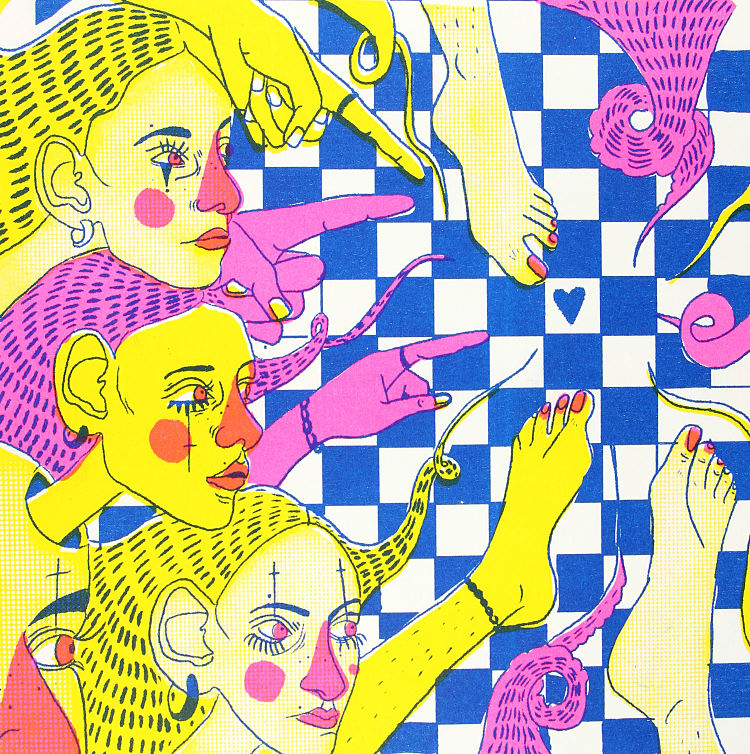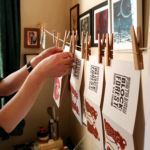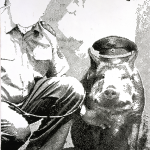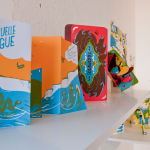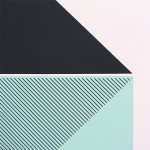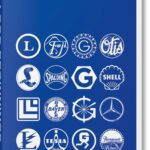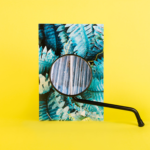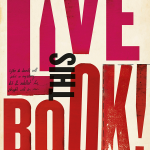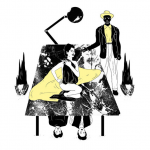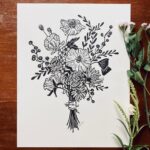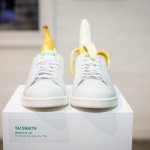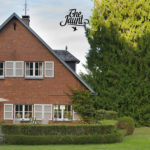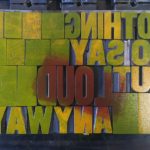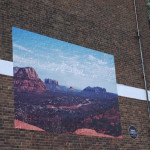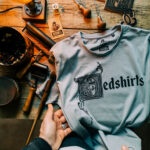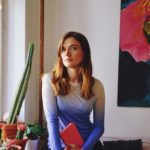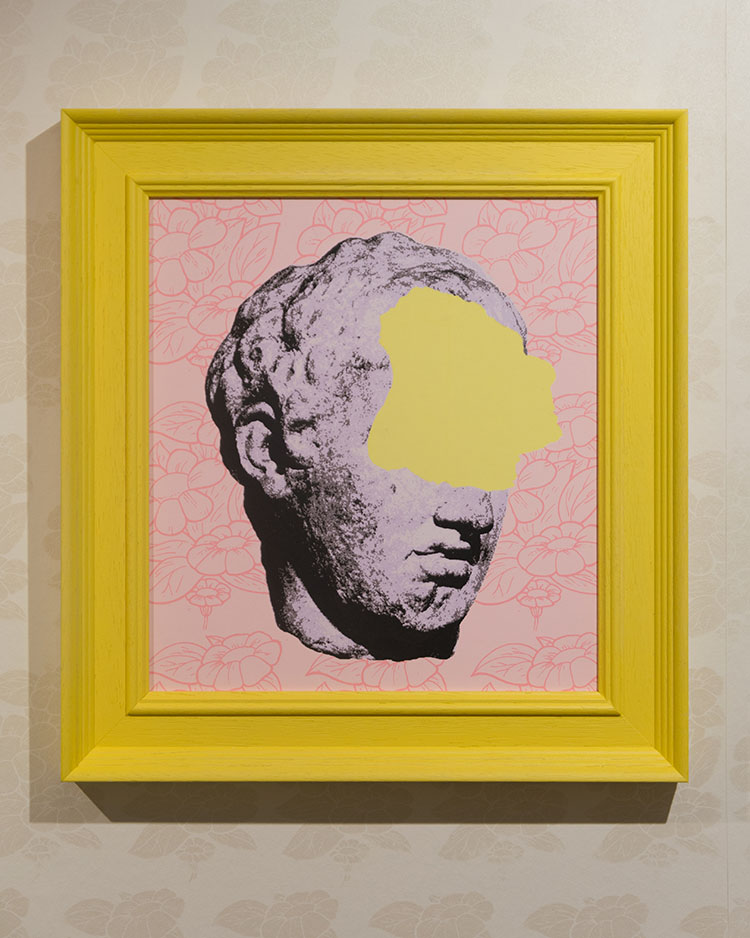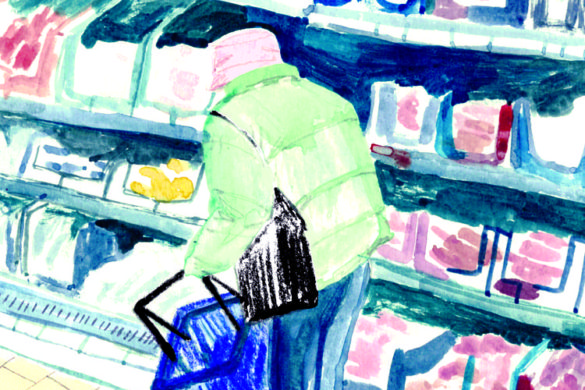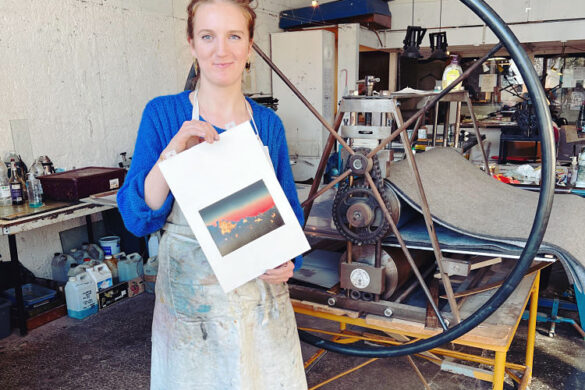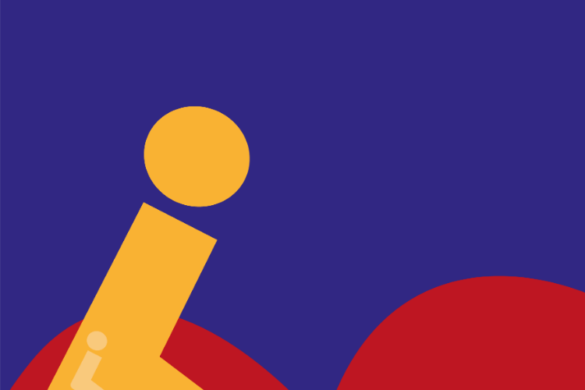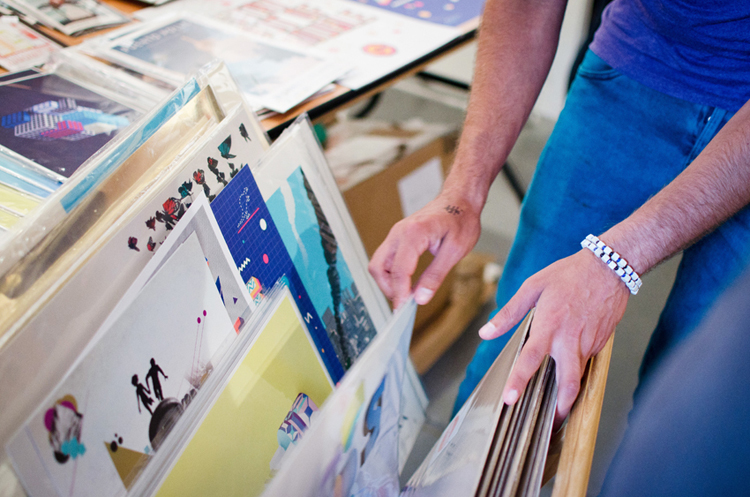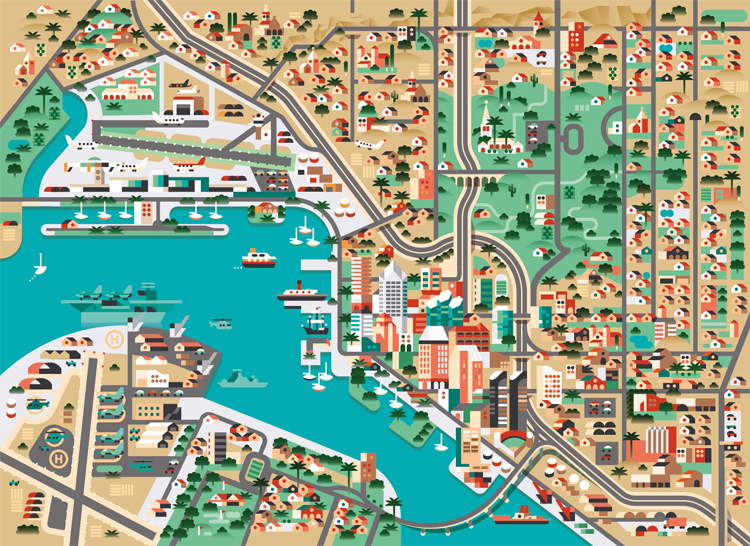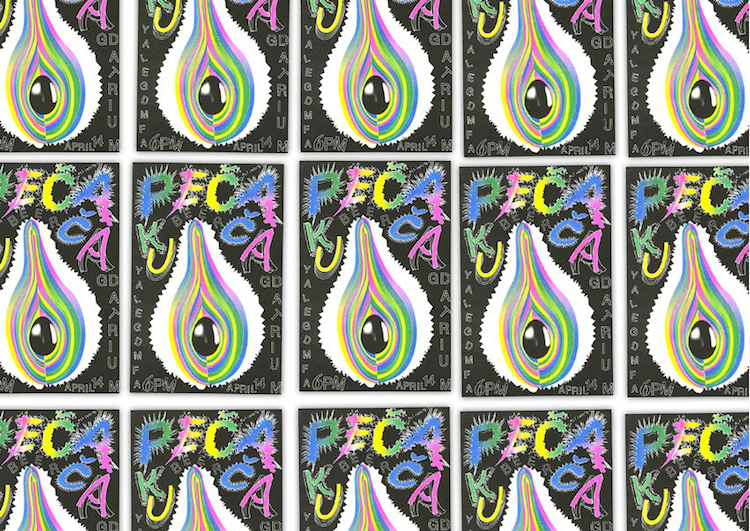It’s hard not to love Rosa Kusabbi’s work, and her attitude: first, we were taken with the cursor on her website (just go there if you haven’t already, and point at things); then, we were even more taken by the fact her dissertation pieces were animations of a duo of brilliant woman-made tracks,The Slits’ Typical Girls and Bush Tetras’ Too Many Creeps.
Thankfully, we’re not the only ones to have realised how great the Liverpool-based illustrator and animator is: since graduating from John Moores University last year, she’s been named a BOLD artist of the month, graced numerous grads-to-watch lists, and picked up commissions from the likes of TikTok, Instagram and Everpress. But even though she’s working with big-name clients, her work is resolutely punk in spirit and political with a small ‘p’: whether it’s through representing all sizes, skin colours or hairiness, the women in her work aren’t just subjects, but little acts of protest.
Rosa was a real joy to chat with, so here’s a rather long conversation about fantastic female-fronted bands, the joy of Riso printing, and how sometimes, the best way of spreading a message is through very bright colours.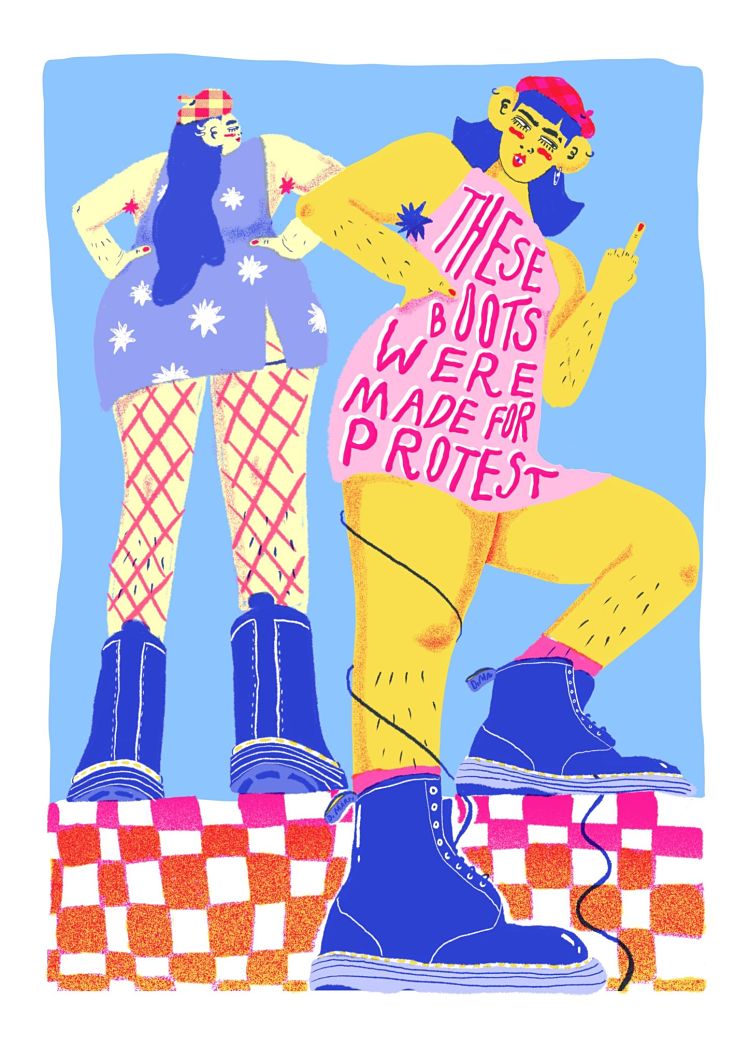 How was it graduating last year, without having a degree show or anything like that?
How was it graduating last year, without having a degree show or anything like that?
It was really disappointing at the time, because that’s kind of what you’re working towards, with your final project—getting to see it on display, and seeing everyone’s work all together. We didn’t get any of that. But they did do an online degree show, which was good, and they accommodated it really, really well; making the best of a bad situation. In some ways, I think it probably made me work a bit harder, having been in a pandemic. For some people, it was probably the complete opposite, but luckily for me, in a weird way it spurred me on to work a bit harder.
One thing that really grabbed me was when I read about your final project, with the female punk band thing, which was very exciting. Can you tell me a little bit more about that?
For my dissertation I was really interested in the Dada art movement, and then relating that to punk. As I was doing that, I realized that the women throughout both movements were often forgotten. To me, the spirit of punk would mean that surely you’d be listening to women… I don’t know if those bands were big at the time and have been written out of history, or whether they weren’t given the opportunity as much at the time? It’s probably a mixture of both.
I just wanted to really champion the women. At the time, the women’s liberation movement was coming to a head and there was that rebellion: “I’m not going to be like a stay at home wife, I want to be creative, and I want to inspire other women to do the same.” I think that’s probably one of the biggest rebellions against the patriarchy that we could have, just being able to say, “No, I’m going to be creative, and I’m going to shout about it.” I really wanted to get that spirit into my work. That’s what I’m really personally inspired by. It’s funny, because I think aesthetically my work is really the opposite to that punk thing. It’s like the anti aesthetic, but it still has elements that are punk that I wanted to come through.
Tell me about why you chose the songs you did to be animated, Typical Girl by The Slits, and Too Many Creeps, by Bush Tetras…
I hadn’t actually heard of Bush Tetras before, but that song really relates to today and what’s going on now with women being harassed. As a woman, I instantly took Too Many Creeps as describing wanting to go out and wear whatever you like, but there’s always horrible creepy men not allowing you to do that without feeling uncomfortable. So that’s what I based the animation on. I think it fits really well with the sort of discourse that’s going on at the moment; and it’s also related to experiences I’ve had. They’re so relevant today, even though they’re written more than 40 years ago.
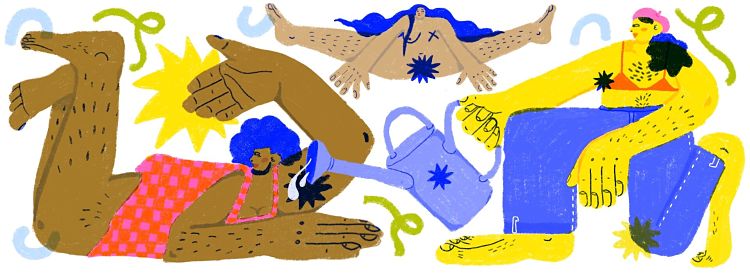
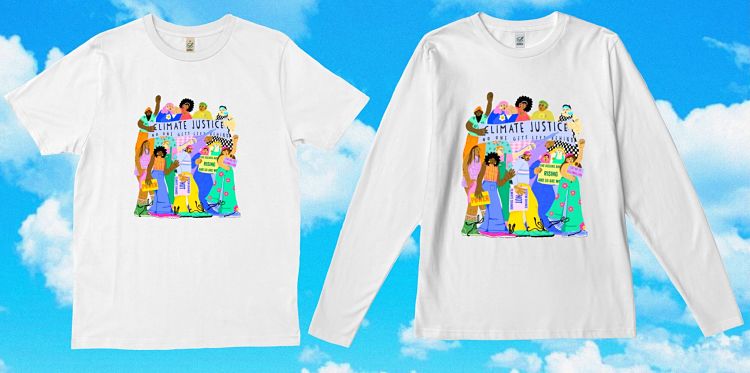 There’s definitely still that cliche of men assuming that women, say, in a band or holding their heads above the parapet are only getting noticed because they’ve got tits or something. I still think that women have to be a million times better at so many things than their male peers to get the same level of recognition.
There’s definitely still that cliche of men assuming that women, say, in a band or holding their heads above the parapet are only getting noticed because they’ve got tits or something. I still think that women have to be a million times better at so many things than their male peers to get the same level of recognition.
It was a nice last project, as we could give ourselves whatever brief we wanted to explore. What’s great about it as well is that a lot of the commissions I get now are from people who look at the work and want something similar: I did those pieces, knowing that that’s what I really wanted to do. So now I get a lot of commissions that I really want to do, which is good.
There’s something really interesting in those bands that correlates with your work in that it’s getting a political message across but in that sort of Dada way, by being playful and by being a little bit sneaky about it, if that makes sense.
I think you could interpret the songs in whatever way you wanted to, especially Typical Girls. When I first listened to it, it took a moment to see that it’s sort of satirical: you could just think that their message is just what women think, the rules that have been enforced on them, but they’re breaking through that. You could interpret it in either way; so anyone could be singing it and not realising that they’re spreading a message of female empowerment without even realising.
Your work inherently has a political side, but you can also enjoy the vibrancy and energy of it all purely on aesthetics, so there’s two levels. Do you try to incorporate that political side even in commissioned work?
Drawing and making work is my response to society and what’s going on a lot of the time, so I think it always seems to be political, because that’s mostly what’s on my mind—it’s my way of working through what I’m thinking about, maybe being really annoyed at the government or whatever. That’s what helps me process things: I’m not very good at articulating things in words, but I can get it out on the page.
I do want the work to just be something you can look at and enjoy for what it is—I think a lot of who I am is just sort of the colour and vibrancy of it all—but I always want to have at least a little message in there, even if you’re not too sure what it is. Or even if it’s just including a person in it that’s body positives, or being inclusive of all races and things like that. I suppose that shouldn’t really be a political message.
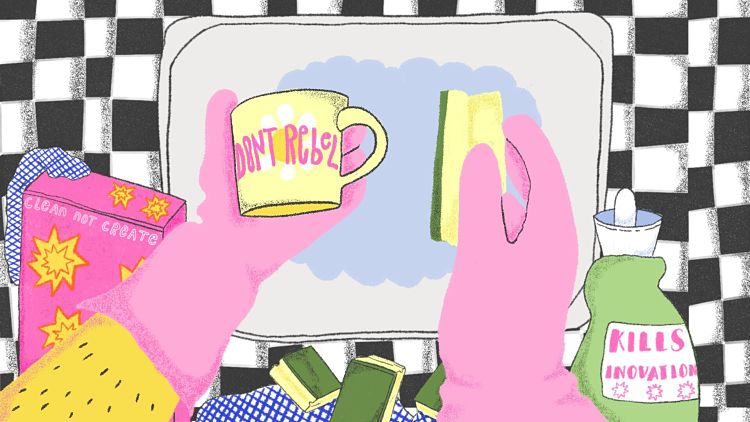 But I guess it still is, isn’t it… and it takes a commission where the creative breaks away from inherited stereotypical bodies and so on. Can you tell me more about the image you created for International Women’s Day?
But I guess it still is, isn’t it… and it takes a commission where the creative breaks away from inherited stereotypical bodies and so on. Can you tell me more about the image you created for International Women’s Day?
I was asked to create this sticker for Instagram for International Women’s Day; they asked me to do a “celebration” and I did 15 different sketches. They picked my one which was a mother and a child. The image that I tried to create was a sort of anti-mother—a cool one, with the hairy legs and tattoos and things like that—just not how mums are usually portrayed. I was also very worried that they might think, “Oh, the first thing she things of with International Women’s Day is a mother”—women can be so much more than that—but I think it was important to have a representation of a mother because whatever values we have as women will pass on to our children as well. That’s where acceptance and equality and things start.
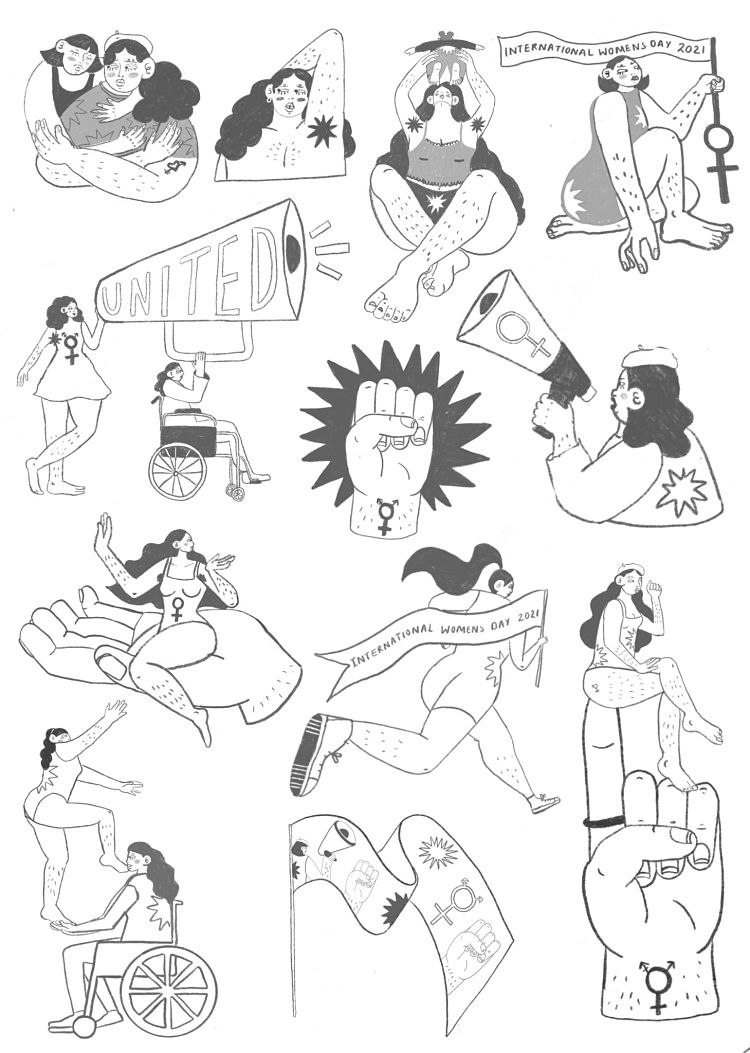 It seems that the work you’ve been getting very much aligns with your values, so I’m guessing there’s not really been any battlers with clients around things like representation?
It seems that the work you’ve been getting very much aligns with your values, so I’m guessing there’s not really been any battlers with clients around things like representation?
Yeah, I haven’t actually had anyone come to me that I would think I don’t really align with me. I’d probably turn them down! I’ve been doing a couple of things to do with climate justice, which is something I’m really passionate about. I had an amazing brief to highlight the climate justice movement and the intersectionality: the fact is that changes to the environment affect marginalised communities the most, so they should really be at the forefront of the conversation.
I guess I’ve been really lucky but it’s also partly down to the fact that when you look on my website, I hope I bring to the forefront who I am, and the kind of work I want to do.
I’m gonna sound like a total Nan now, but I read you’ve been pretty hot at showing your work on TikTok… I didn’t really know illustrators were using it as a platform in that way, and it seems you have a knack for it…
I really like making videos, I do quite a bit of stop motion and things like that—making them as if it’s a piece of art within itself. I don’t think there’s that many other illustrators that will do that, a lot of people are very sales-driven. That’s great, but it’s not very me. I think TikTok is the place to reach the most people: if a video goes well on there, I’ll get a hell of a lot of sales and commissions and stuff. But I can just make videos that I would quite like to make anyway. I think it’s probably one of the most important things nowadays, actually being good at social media, especially for illustrators. It’s really integral, which is annoying, but it’s just the way to go. I think it’s just all about the hard sell sometimes, and I get dragged into that, but I think I’m more more about the actual creative side. So that gets to me a little bit.
What are the tools that you usually use? You mentioned you just bought a printing screen?
Yeah I bought an exposure unit; it’s the first big piece of equipment I’ve ever had. I love Risograph printing as well, that’s something that I did at uni a lot. I use Procreate on the iPad, and all the video stuff is in AfterEffects.
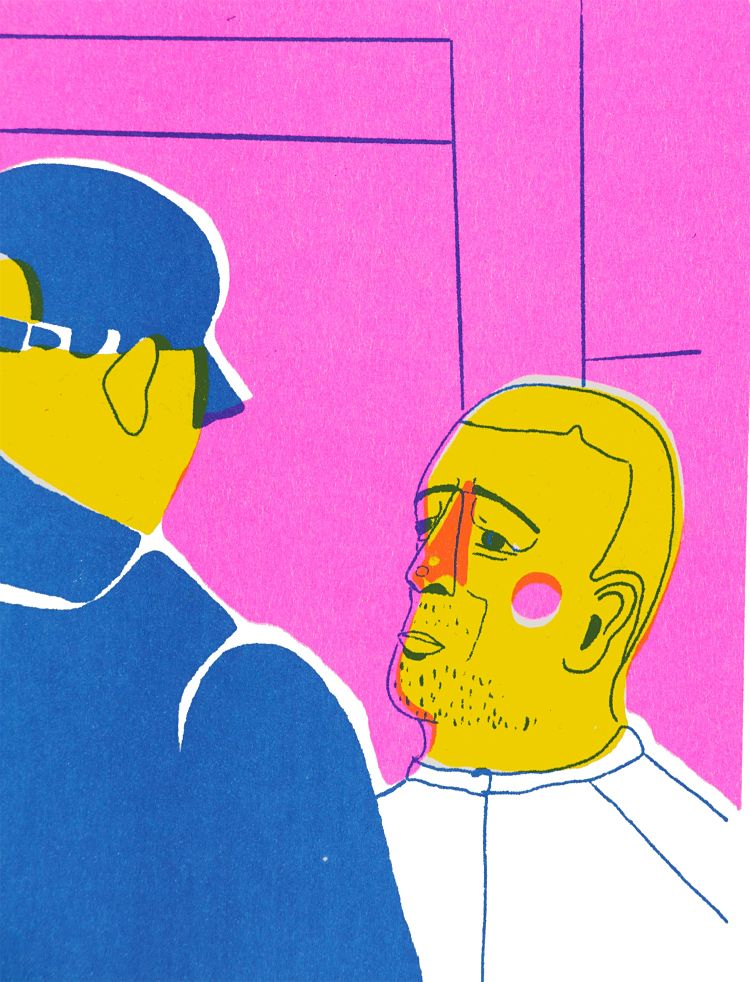
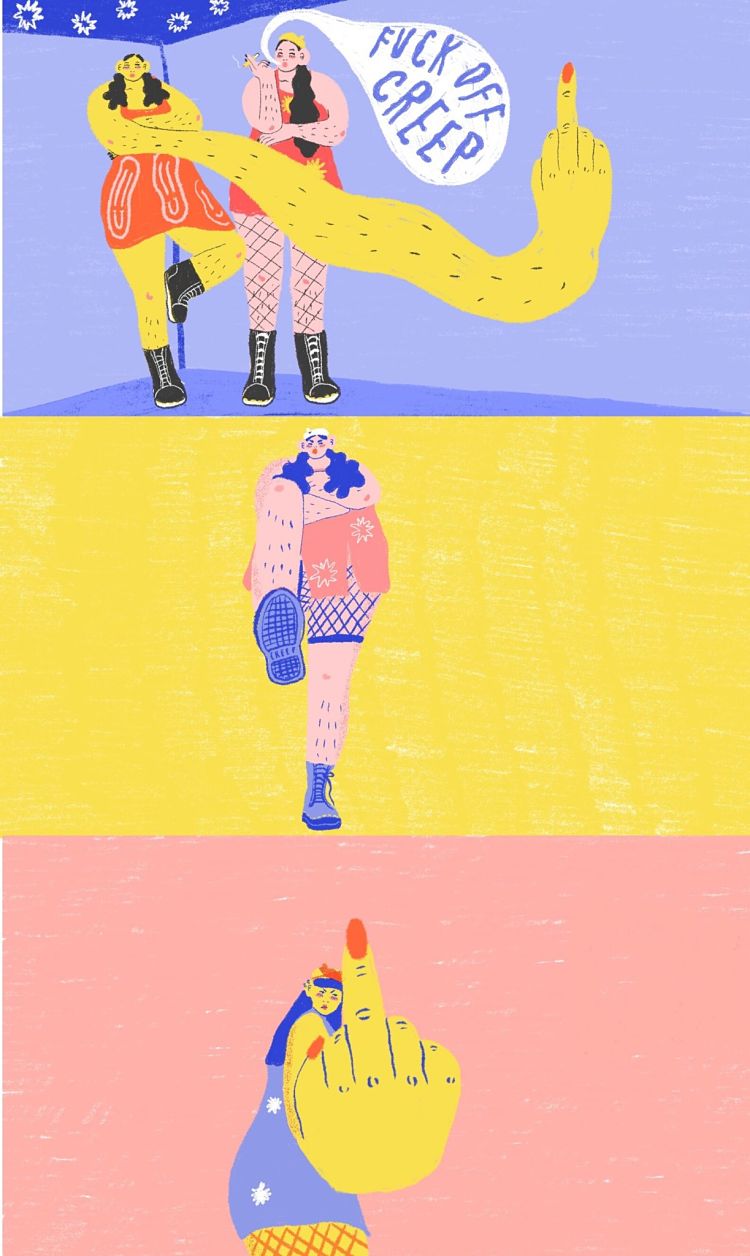 I know it sounds quite grandiose, but do you have any plans for a sort of illustration career trajectory?
I know it sounds quite grandiose, but do you have any plans for a sort of illustration career trajectory?
It’s a really difficult question for me because I’m so all over the place with what direction I want to go in. I really want to do more animation again, I would love to work with some really cool female musicians and maybe do an animated music video. There’s just so many people I’d love to work with…
You might like...
- Autobahn - November 26, 2021
- Alphabetical - November 12, 2021
- SOFA Universe - November 8, 2021

